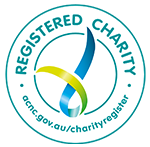Readers’ Memories Celebrate Its Centenary by Dr Patricia (Trish) Milne
There are many aspects of The School Magazine to be celebrated in its centenary year. Not only is it the longest continuously published magazine in Australia, it is the longest continually published children’s literary publication anywhere in the world.
Published by the NSW Department of Education, the very first edition was ready for the start of the school year in February 1916. Its full title was The School Magazine of Literature for Our Boys and Girls. In early issues it was published monthly in three Parts. Part 1 was for children in third class, Part 2 was for those in fourth and fifth classes and Part 3 for sixth class children. The aim was to provide every primary school child in NSW with good stories, poems, plays, extracts from novels, facts and fun – all for free. Additional information about the history of The School Magazine can be found on its website.
At the beginning of each part there was a special message to the ‘boys and girls’ introducing them to ‘their own Magazine’ and what they might expect to find in future issues. The message in Part 2, for example, tells the children that ‘a magazine’ is a word that comes from the Arabs and means ‘a storehouse’. It then tells them some of the ‘stores’ they will find in its pages each month.
This message also tells the children how the magazine is produced mentioning everyone involved in the process: the editors ‘who write some of the articles especially for you, and search everywhere for what will give you pleasure and perhaps a little wisdom too’; the Government Printer who ‘hopes you like the type and the pictures’. It mentions that the cost is ‘paid for by the Government from money contributed by people. Thus you see how many are helping to give you this Magazine. You will sometimes think of them and be thankful’.
The authors of those early issues were largely from overseas, especially Great Britain and included William Wordsworth, Alfred Tennyson, Samuel Coleridge, Lewis Carroll, Robert Southey and Sir Walter Scott. It included Australian writers such as Mary Gilmour. Certainly the standard of the material included in each part expected a great deal of its readers. As one of our contributors noted, there was no condescension or dumbing down. The editors simply assumed that children would read and appreciate the ‘stores’ in each issue.
Celebrating the centenary
Most people who attended a NSW school in the past 100 years would have read The School Magazine but its popularity has meant schools in other states now subscribe and 1.5 million copies are printed each year. Through The School Magazine generations of children have been introduced to the best in children’s literature and been nurtured towards a lifelong love of reading.
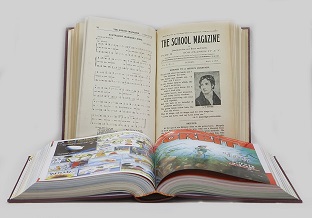
To celebrate this important centenary milestone the National Centre for Australian Children’s Literature invited current and former readers to tell us what it meant and/or means to them. Over a three-month period in early 2016 we heard from many people, some of whom read The School Magazine as long ago as the 1930s and right up to, and including, the 1980s. One reader who read it in the 1940s herself, told us ‘my mother read The School Magazine when it was first issued and now my grandchildren read it’. Of particular interest are the stories from some of our most respected authors for children and young adults who told us that their very first published pieces were in The School Magazine.
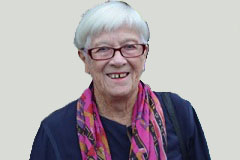 The creators, whose work filled its pages over all that time, represent the best of children’s authors and illustrators from Australia and beyond. There are simply too many to single out some for special mention. However, of all of the illustrators whose artwork has featured over the 100 years, Noela Young does deserve a special mention.
The creators, whose work filled its pages over all that time, represent the best of children’s authors and illustrators from Australia and beyond. There are simply too many to single out some for special mention. However, of all of the illustrators whose artwork has featured over the 100 years, Noela Young does deserve a special mention.
Familiar to us for her illustrations of Ruth Park’s the Muddle-headed Wombat, she contributed artwork to The School Magazine for over 60 years. In addition, her contribution to Australian children’s literature in general is truly outstanding.
Noela Young’s first illustration for a children’s book was Enid Bell’s David and his Australian Friends for which she shared first prize for The Children’s Book Council of Australia (CBCA) Best Illustrated Book of the Year in 1953. As recently as 2014 she contributed the artwork for Australia’s Greek Pirates. Since 1953 she has received a further nine awards making her the second highest awardee since the inception of The CBCA Awards. Noela Young is the subject of the National Centre’s latest ‘wish list’. It is the Centre’s aim to collect every edition of every Australian children’s book and from time to time we publish a ‘wish list’ to help us locate missing items for a particular creator.
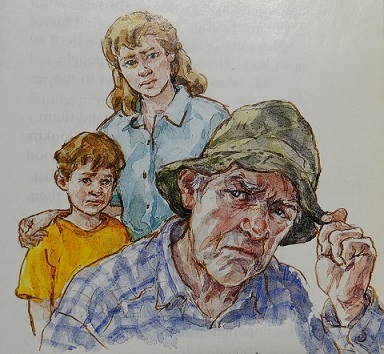 Committed and talented editors nurtured both the magazine and the creators. They are themselves giants of Australian children’s literature and include Noreen Shelley, Patricia Wrightson, Lilith Norman, Duncan Ball, and more recently Anna Fienberg and Tohby Riddle. Others such as Geoffrey McSkimming, Cassandra Golds and Ursula Dubosarsky have worked on the staff.
Committed and talented editors nurtured both the magazine and the creators. They are themselves giants of Australian children’s literature and include Noreen Shelley, Patricia Wrightson, Lilith Norman, Duncan Ball, and more recently Anna Fienberg and Tohby Riddle. Others such as Geoffrey McSkimming, Cassandra Golds and Ursula Dubosarsky have worked on the staff.
Before the 1960s, particularly, The School Magazine was eagerly anticipated because it was the main source of reading for many children. Even a library was not the norm in many schools at that time. Today there are over eight decades of readers who remember The School Magazine as an important part of their school days. We see this at the Centre whenever visitors spot our set of bound copies. These visitors love telling us the stories they remember and how much they meant to them. Frequently they want to find the stories and relive their earlier experience of when they first read them.
These memories are also part of The School Magazine’s own story. They provide a unique glimpse of the impact the magazine and its creators have had on generations of children. We believe these stories should not be lost. Through them we are able to show the important role The School Magazine has played in the lives of children over the years. Some of the stories came from people now in their 80s, but they still have very fond memories of The School Magazine. Today we celebrate its 100th birthday and, more importantly, we celebrate its enormous and wide-ranging impact on generations of children.
Recalling each new copy
Without exception, readers told us how eagerly that they anticipated each new copy. Some still have all their copies. ‘Not only do I recall receiving The School Magazines in primary school but I still have mine. I was at Parramatta West Primary School and we received them from third class to sixth class so it would have been 1965-68′. ‘They were handed out in the morning and it was agony knowing it was in your desk but having to wait until the class had done spelling, mental arithmetic and parsed the paragraph written on the blackboard before we could open them’. Also, ‘there was always great excitement when it arrived and we put it in the folder with all of the other issues’.
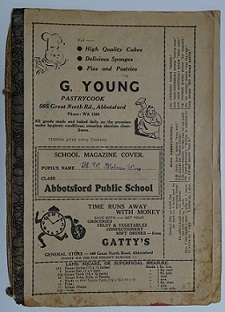 The folders that were given to children at the beginning of each year made a big impression on many people, for various reasons. Many readers remembered ‘trying to untangle the strings in the cardboard folders we were given to keep our issues in for the year’. ‘There was always the big decision about which arrangement worked best. Should each new issue have its own string or was it better to use the one string and put each new copy on top of the previous one. But while that saved a tangle, it sometimes made it hard to find what we were looking for later,’ and ‘in the end my mother cut out the strings and inserted some thin pieces of elastic because she thought it would be easier.’
The folders that were given to children at the beginning of each year made a big impression on many people, for various reasons. Many readers remembered ‘trying to untangle the strings in the cardboard folders we were given to keep our issues in for the year’. ‘There was always the big decision about which arrangement worked best. Should each new issue have its own string or was it better to use the one string and put each new copy on top of the previous one. But while that saved a tangle, it sometimes made it hard to find what we were looking for later,’ and ‘in the end my mother cut out the strings and inserted some thin pieces of elastic because she thought it would be easier.’
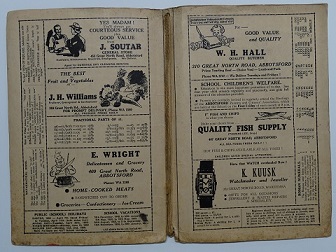
A couple of readers mentioned the advertisements from local shops and businesses on the covers. One remembers her teacher telling the class to ‘remind your parents to patronise the shop keepers because without their help you would not be given free folders’. A magazine cover from this time and held by the University of Canberra’s Australian National Museum of Education includes the following: ‘Many thanks to the generosity of Traders appearing on this publication. Their kind support has made it possible for children to receive School Magazine Covers free of charge. It would be nice to thank them when shopping in their stores’.
‘It was special’, someone said, ‘because it was my very own’ and ‘I remember what a great honour it was to be asked to give them out’. Another wrote, ‘I just loved receiving it each month. It was a highlight of my primary school years’ while another reader from the 1940s said, ‘obviously I wasn’t the only kid around who counted the days to the next issue’.
For some, handling each new copy was a tactile experience. The number of readers who still remember the smell of each new copy was a surprise. By contrast, remembering other smells from childhood is not quite so pleasant. ‘It’s a smell to remember fondly rather than the smell of the frequently rancid milk we were all required to drink, after it had been sitting outside in the summer heat.’ One person noted that she ‘loved the smell and the chalkiness of the paper’. Another loved running a hand over the cover while anticipating what might be found inside. While another commented, ‘there was that wonderful aroma that filled the nostrils the moment I opened the latest edition in class’.
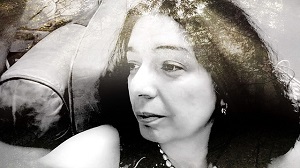 Children’s author, Sophie Masson commented ‘for me, it had a huge effect. I don’t remember a single word of my primary school textbooks; but I remember vividly, more than a few issues of The School Magazine. I remember how I raced to learn to read so I could borrow my older sister’s copies and devour them. I remember the excitement of the days The Magazine would be distributed in school – this was your own Magazine, your own copy, it was so exciting to hold it in your hand! I would read it all the way home along the busy Pacific Highway in suburban Sydney, occasionally bumping into telegraph poles, so absorbed was I!’
Children’s author, Sophie Masson commented ‘for me, it had a huge effect. I don’t remember a single word of my primary school textbooks; but I remember vividly, more than a few issues of The School Magazine. I remember how I raced to learn to read so I could borrow my older sister’s copies and devour them. I remember the excitement of the days The Magazine would be distributed in school – this was your own Magazine, your own copy, it was so exciting to hold it in your hand! I would read it all the way home along the busy Pacific Highway in suburban Sydney, occasionally bumping into telegraph poles, so absorbed was I!’
Opening children to a new language and a new culture
Everyone told us how important The School Magazine was in developing both their reading skills and their love of reading. Many credited their life-long love of reading to having read The School Magazine. However for some, who migrated to Australia with their parents, The School Magazine was important in helping them learn English, their new language and in helping understand the culture of their new country.
Anne Campbell arrived at a small school in rural New South Wales as an eight-year-old child from Holland. Although there was no school library there was a woodshed full of old books that had been donated. Most were above her reading skills but she loved spending time in the woodshed because she knew that the words would tell her what the pictures were about if only she knew what they meant. ‘And then a miracle happened. Once a month a big bundle of something called The School Magazine arrived. Magic! Those for grade three were so easy I could understand the words! I soon progressed to the ones for older children. Miracle of miracles, each month a brand new one arrived. New poems, new short stories, and best of all more of the long stories continued from the month before. Thanks to The School Magazine I read my way through most of the books and magazines in the woodshed, from the Women’s Weekly to all the novels by Charles Dickens. Without this start I would never have gone on to do a doctorate in American and German Literature nor become a children’s author myself. There was no such thing as ESL programs in those days! But there was The School Magazine.’Sophie Masson came to Australia as a French-speaking child with no English. She wrote about loving everything in The School Magazine and how she was teaching herself English as she read it. Now as an internationally published author she wrote ‘English has become the language of my imagination. In part this happened because of the influence of The School Magazine – one of the world’s great literary treasures’.
Sometimes parents of another newly arrived child ‘borrowed’ her magazines not only to check her progress but also to study the vocabulary and sentence structure themselves. ‘My Mum’s reading of the comics and my Dad’s reading of the newspapers and listening to the radio made for memorable and entertaining family “language” evenings’. With The School Magazine, it provided a wonderful and inexpensive start to learning English, my new language – with vocabulary, spelling, reading, comprehension and writing – especially when retail books were too expensive for a struggling family’. She told us too that while she loved the riddles and jokes it was often a challenge when she told them to her parents as the humour was often lost in the translation.
Some newly arrived parents thought reading Australian literature was a good way to get to know their new country and assimilate more quickly so they encouraged their children to read The School Magazine. ‘As recently arrived migrants my parents encouraged me to read as much Australian literature as possible’ and ‘some of the stories helped me understand my new country and this, in turn, helped me to understand, and then be accepted by, my classmates.’
Nurturing emerging authors and illustrators
We heard from several current children’s authors and illustrators who have had material published in The School Magazine. They wrote of the nurturing they received from the editors of the time and how this nurturing encouraged their own development as writers.
Sophie Masson summed up the feelings of others when she wrote: ‘what is more, The School Magazine nurtured not only generations of readers, it has also been one of the single most important factors in the rich flourishing of Australian children’s literature.’ She told us that as a writer her first ‘break’ occurred when her story ‘Platypus Daybreak’ was published in The School Magazine. It was 18 months later that her first novel was published.
She also wrote that ‘through The School Magazine I was introduced to a whole world of Australian imagination. I began to understand that Australia, the country I lived in, but which wasn’t the culture I was most familiar with, was a source of the most wonderful stories every bit as much as Europe. For instance, an extract from Patricia Wrightson’s The Rocks of Honey (which sent me to the library to find the book) made me realise that Australia had not only an Aboriginal past – but also an Aboriginal present’.
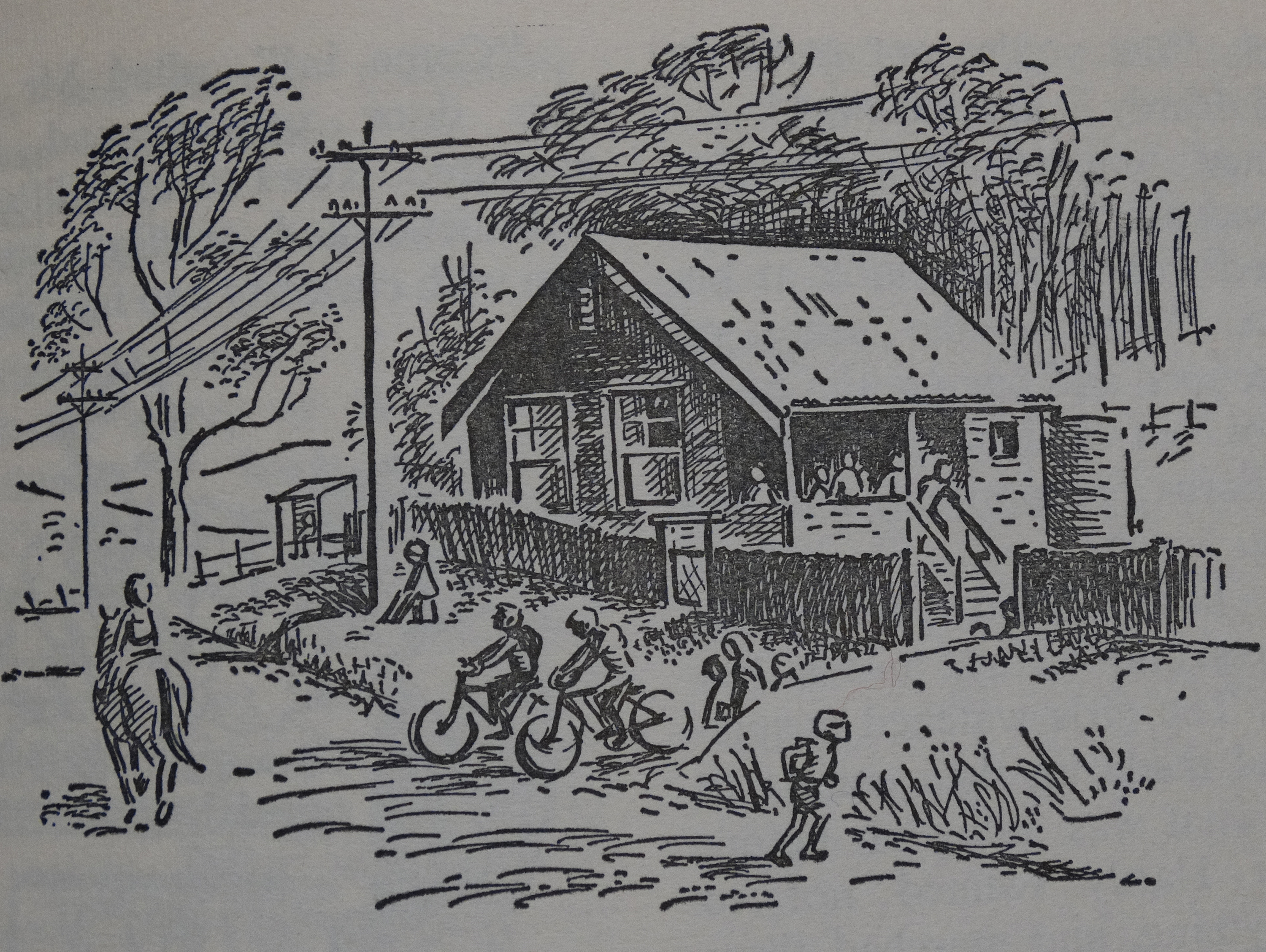
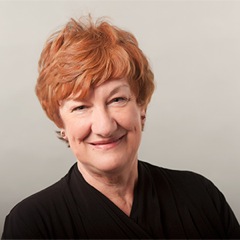 Hazel Edwards OAM said that her first stories and plays were published in The School Magazine and how grateful she is for ‘the encouragement received and introductions to fabulous illustrators’.
Hazel Edwards OAM said that her first stories and plays were published in The School Magazine and how grateful she is for ‘the encouragement received and introductions to fabulous illustrators’.
Vashti Farrer told us that ‘in primary school I wanted to be a writer so reading the stories and poems was not only a joy it taught me the craft of writing. Twenty years later I published my first novel.’
 Deborah Abela wrote, ‘with little money at home The School Magazine and Golden Books were my reading world. It was always such an exciting moment when the new magazine was held up before the class. I wish my adult self could have whispered to that skinny kid back then that one day I’d even be in it. I’d have loved to have seen her face.’
Deborah Abela wrote, ‘with little money at home The School Magazine and Golden Books were my reading world. It was always such an exciting moment when the new magazine was held up before the class. I wish my adult self could have whispered to that skinny kid back then that one day I’d even be in it. I’d have loved to have seen her face.’
Tohby Riddle was recently interviewed for the Kid’s Book Review blog in his capacity as an Ambassador for The School Magazine’s Centenary. In response to the question of how he first became involved with The School Magazine he commented, ‘I got involved when I first submitted a poem. It was accepted and then I was asked if I’d like to illustrate it too because they’d seen a couple of books of mine. There seemed to be nowhere else like The School Magazine to get this kind of opportunity’.
Enjoying the stories, poems, plays and more
Many readers said they loved everything. Comments included, ‘I loved all of the stories and poems and gobbled them up’ and ‘I loved the range of stories, some fiction and some factual’. ‘I loved the stories, particularly tales of other children’s adventures, the poetry, the plays where I could interact with my classmates and colouring in the illustrations and then comparing them with my friends’ work.’ Also, ‘The NSW School Magazine really did have great stories in each edition and were much more enjoyable than many of the boring school readers of the time’.
Some readers still have their copies from their primary school years. ‘Recently I looked through the magazines I read over 40 years ago and the black and white cover illustrations brought back many memories. I also remembered some of the stories but not the names of the authors and was pleasantly surprised to find out how well known many of those authors are’.
Without mentioning a particular illustrator one reader noted how much she loved the illustrations. She looked out for them in each issue and even came to recognise the style of the various illustrators.
The serials were particularly popular and readers remembered the anticipation of waiting for the next issue.
New adventures about a loved character were also eagerly anticipated. ‘When I was in fourth class in 1952 I always looked to see if there was a new adventure of Piggy Grunter. I loved reading about Piggy’s each new escapade and never really thought of him as just a pig!’
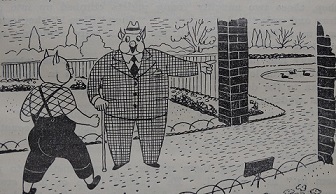
Another reader remembers ‘articles on music with a story and examples of music notation. There was no condescension just the assumption that children would read, appreciate and learn about classical music and musicians’. This sentiment was also expressed in this way: ‘The School Magazine was an inspired publication. Never did it talk down to us children. They assumed we’d be interested in the higher points of our history and culture. There was no dumbing down’.
Extracts from Robin Klein’s books were popular with some readers.
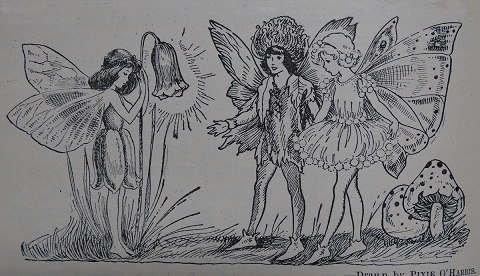
Pixie O’Harris was a favourite with a number of readers. ‘I specially loved anything by Pixie O’Harris who was often in the magazine when I was reading it. I devoured everything by her, her stories and her illustrations. She was big on fairies and I loved that.’ The other day I was trying to remember a poem by her that we had to memorise when I was in fifth or sixth class and even tried to find it by Googling.’
Pixie O’Harris had a very personal connection to one reader. She read The School Magazine in the 1960s but told us that she has a much earlier memory of The School Magazine. ‘My mother was close friends with the Harris family. The artist Pixie O’Harris was part of the family. Auntie Pixie and two of her sisters, Esme and Pat, drew a lot of pictures in The School Magazines over a number of years. Esme and Pixie were already drawing for the magazine when Pat started doing sketches for them. Pixie suggested Pat use a name other than Harris so it didn’t look like you had to be a Harris to get a drawing published – so Pat signed hers ‘Tricia Bradbury’. Their niece, Pam, had all her school magazines from the 1940s and she kept them because her aunts did many of the drawings in them’.
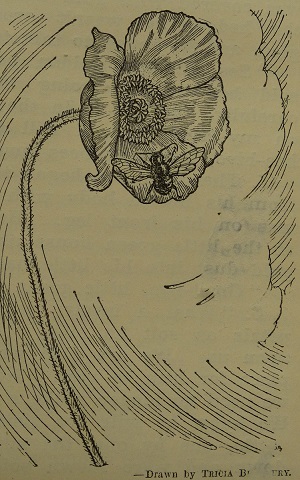 The poem, ‘Cuppacumalonga’ is still remembered fondly by one reader from the 1950s. Many years ago he travelled near the old Cuppacumalong Station, the setting for the poem and recalled, ‘on each trip out and back I would pass Cuppacumalong Station near Tharwa and it would bring back memories of the poem from schooldays’.
The poem, ‘Cuppacumalonga’ is still remembered fondly by one reader from the 1950s. Many years ago he travelled near the old Cuppacumalong Station, the setting for the poem and recalled, ‘on each trip out and back I would pass Cuppacumalong Station near Tharwa and it would bring back memories of the poem from schooldays’.
Several readers remembered enjoying the puzzles, especially the crosswords. ‘Doing the crosswords was the start of a lifelong enjoyment of crosswords for me’.
One reader who was a student of the Correspondence School during her primary school years remains a devoted fan of The School Magazine although she is now retired. Several people still have all of their copies. Another now has her own subscription and passes them on to her grandchildren.
One reader still has a ‘vivid memory’ of the day she was the only child in her class to get no mistakes in a spelling test. She was allowed to sit outside in the sun with a ‘pile of School Magazines for a blissful twenty or thirty minutes enjoying the poems and the stories’.
A number of years ago the Centre ran a number of sessions at two retirement villages in Canberra. Our project, ‘Story: Mental stimulation, self-reflection and reminiscence, social interaction and personal wellbeing for seniors through Australian children’s literature’, included ‘read and reminisce’ discussions about seniors’ favourite children’s books and the time and environment in which they were set, as well as various interactive sessions with contemporary children’s books. Anne Campbell ran a number of the sessions. She told us, ‘ I was surprised at the extent of the influence of The School Magazine on the lives of the people in the retirement villages when I was working on that project even through they hadn’t realised it at that time’.
A fitting conclusion to this section is this comment: ‘when I look back I see The School Magazine addressed issues such as indigenous and environmental issues, long before they became topical. School Magazine was getting these messages across to children’.
Assisting teachers
Through the stories we learned that teachers seized on The School Magazine and integrated it into various parts of the curriculum. Certainly in the very early years it would have been one of the very few teaching resources available.
Oral reading from The School Magazine, with children taking turns to read aloud around the class, seems to have been used extensively. However, it wasn’t always popular with the children. It required them to follow carefully while others were reading in case they were ‘picked on next and had to continue at the right spot’. A reader said she didn’t like it because she felt sorry for the children who found it hard. She continued, ‘when I was a teacher I never asked my children to do this’.
Another reader told us, ‘unfortunately, too often, we would have to read in turn which was torture for the faster readers such as myself. We would sneakily read ahead but once immersed in a story we would suddenly be called on to read aloud and would panic as we tried to find where the rest of the class was up to – how to kill the enjoyment of reading! This was a lesson I learnt when I became a teacher – don’t have the whole class reading along together’.
One teacher used it for home reading. Children in the class ‘had to read to a parent who then had to sign the spot reached’. Another asked the children to underline words they then had to learn to spell. A reader also remembered being asked to write a composition using the same headings from a story in The School Magazine.
‘Rote learning of poems was a popular task set by teachers and they were often poems from the school magazine’.
Sometimes teachers used the magazine to reward good behavior or good work. ‘I liked finishing my set work as quickly as I could as we were allowed to read The Magazine when we had finished our other work’. Other teachers allowed the children, as a special treat, to colour in the pictures. Many readers said how much they liked doing this and then comparing them with those of their friends.
There was a least one teacher who used it as a deterrent for bad behavior. If there was some misbehavior in the class the reader told us the teacher would say, ‘Take out your magazines. Turn to page 6, analyse the first and second paragraphs and parse every word in the first two sentences.’ He continued, ‘We certainly learnt our grammar. You would think that would have turned me off English but I became an English teacher!’
Sharing The School Magazine with new generations
Many readers went on to become teachers themselves. They used their fond memories of The School Magazine to enthuse the children now in their classes. One reader had kept all of her copies and at Teachers’ College cut up some of the stories to make her teaching resources.
Similarly another reader commented. ‘When I was a teacher I used to set comprehension exercises on suitable stories and used the old Fordigraph to print them off’.
Inspiring generations
 100 years of continuous publication is certainly worth celebrating. However, far more worthy of celebration is the influence and inspiration The School Magazine has been for generations of children, evidenced by the memories of readers that stretch back over 70 years.
100 years of continuous publication is certainly worth celebrating. However, far more worthy of celebration is the influence and inspiration The School Magazine has been for generations of children, evidenced by the memories of readers that stretch back over 70 years.
What could be the secret of this success? Perhaps Tohby Riddle has the answer. During his interview with Kids Book Review he was asked what are the key values of The School Magazine that haven’t changed in the last 100 years. He replied, ‘affectionate respect for the reader’. Who would disagree?
To conclude with the words of one reader, ‘thank you School Magazine, happy 100th birthday, and long may you continue to inspire boys and girls’.
References
Bell, Enid 1952 David and his Australian Friends illus. by Noela Young Sydney: Ure Smith
Earnshaw, Beverley 2014 Australia’s Greek Pirates illus. by Noela Young Kogarah: Kogarah Historical Society
Park, Ruth 1962 The Muddle-headed Wombat illus. by Noela Young Sydney: The Educational Press
Wrightson, Patricia 1974 The Rocks of Honey illus. by Margaret Horder London: Hutchinson
Illustrations
Clark, Anthony 2000 ‘You’re only as old as you feel’ illustrated by Noela Young 85:7 Orbit p237
Dare, Eveline 1943 ‘The Little Green House’ illjustrated by Tricia Bradbury 28:9 Part 1 p151
Farrer, Vashti 2000 ‘Ms White’s Garden’ illustrated by Tohby Riddle 85:1 Countdown p64
Masson, Sophie 1989 ‘Platypus Daybreak’ illustrated by Noela Young 74:5 Blast Off! P142
O’Harris, Pixie 1943 ‘The Christmas Bell’ illustrated by Pixie O’Harris 28:10 Part 1 p150
Shelley, Noreen 1952 ‘Piggy Grunter’s Market Day’ illustrated by Ralf Shelley 37:1 Part 2 p3
Wrightson, Patricia 1964 The Rocks of Honey illustrated by Margaret Horder 49:1 Part 3 p13
Dr Patricia (Trish Milne) is the volunteer Project Manager at the National Centre for Australian Children’s Literature and before her retirement was the Deputy Pro Vice-Chancellor Education at the University of Canberra.
As a primary school child she enjoyed the variety in The School Magazine, especially the serials and the stories about ‘real’ people. It was especially welcome each month because her class library consisted of two shelves in a glass-fronted cabinet. Later she enjoyed sharing the magazine with her own classes in the 1960s and 1970s. The importance of The School Magazine in her own childhood reading prompted her to want to collect the memories of others as a tribute to this important centenary celebration.
Acknowledgements
Trish would like to thank:
Emeritus Professor Belle Alderman for supporting the project and commenting on the draft
Alan Edwards the current editor of The School Magazine and his staff, especially Sue Murray and Karen Jameyson, for their generous support of the project and for granting permission to reproduce the illustrations in this article
Max Brown for taking the photographs
Sage-Nelly Uhr for creating the web pages
Dr Malcolm Beazley Director, Australian National Museum of Education for lending items from the Museum, including the old magazine covers
A very special thank-you to everyone who shared their own memories of The School Magazine. This is your story
Posted by: NCACL | Published: 01 Jun 2021

